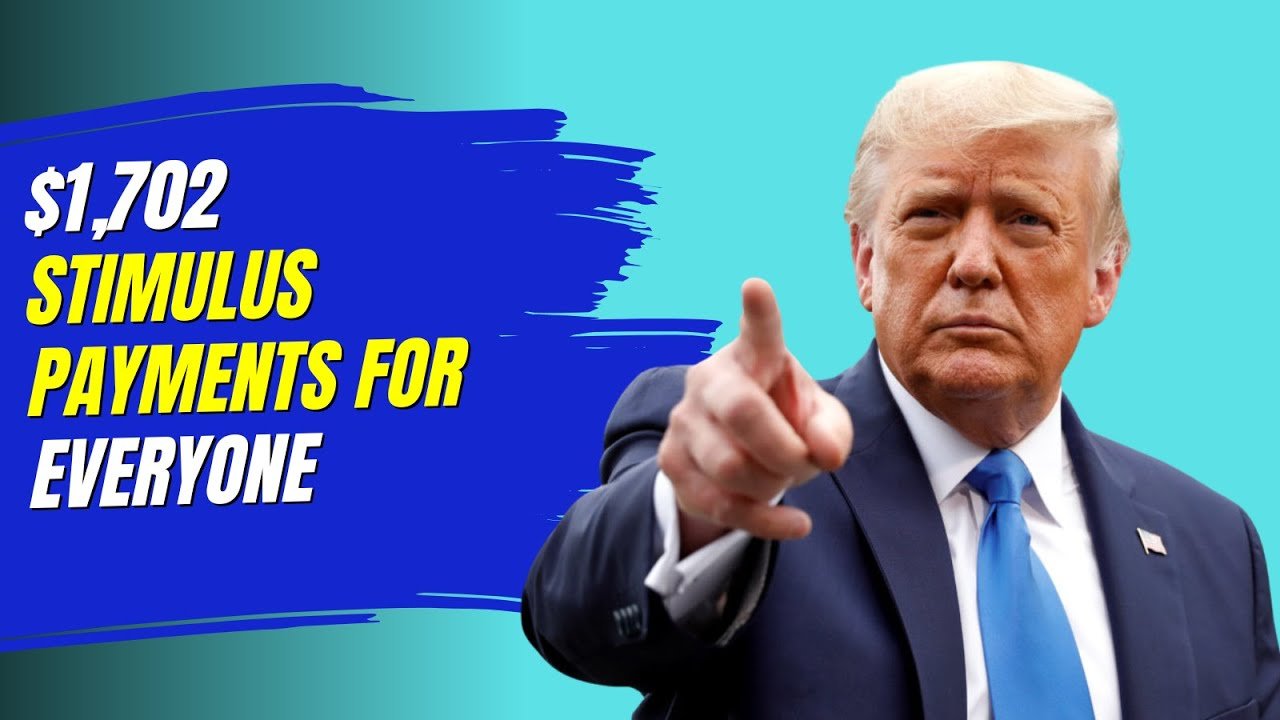$1,702 Stimulus Payment:As the cost of living in the United States continues to rise, many Americans are eagerly awaiting some relief. The good news? The long-awaited $1,702 stimulus payments are finally set to begin arriving in October 2025, providing much-needed financial assistance to individuals and families struggling to balance their budgets amid inflation and rising housing, food, and healthcare costs.
This payment is part of the government’s ongoing economic support efforts aimed at stabilizing families and increasing their spending power during uncertain times. Here’s the full breakdown of who is eligible, when payments will arrive, and what the IRS says about eligibility and direct deposits.
What is the $1,702 Stimulus Payment?
The $1,702 stimulus payment is a one-time direct deposit or paper check payment issued to eligible U.S. citizens. It is designed to provide immediate relief to families facing financial stress due to inflation, job instability, and higher living expenses.
Unlike previous stimulus rounds, this payment focuses on helping low- and middle-income individuals, retirees, and Social Security recipients. The goal is to alleviate economic stress by maintaining consumer confidence and spending levels through the final quarter of the year.
The IRS, in collaboration with the U.S. Treasury Department, will oversee distribution—meaning payments will go directly to eligible recipients’ bank accounts or be mailed as paper checks or prepaid debit cards.
Eligibility Criteria – Who is Eligible for The $1,702 Payment?
To ensure that stimulus funds reach the right people, the IRS has set clear eligibility guidelines. Here’s what you should know before you expect a payment:
1. Citizenship and Residency
- You must be a U.S. citizen, permanent resident, or eligible resident alien.
- You must have a valid Social Security Number (SSN).
- You must reside primarily in the United States for at least six months in 2025.
2. Income Requirements
This payment is targeted for low- and moderate-income households.
- Single taxpayers: Adjusted Gross Income (AGI) less than $75,000.
- Married couples filing jointly: Joint income less than $150,000.
- Heads of household: Income less than $112,500.
Those with income slightly above these limits may still receive a reduced payment, and this benefit will gradually phase out as income increases.
3. Taxpayers and Non-Filers
To ensure the IRS has your current information, you must file your 2023 or 2024 tax return.
- Non-enrollees receiving Social Security (SSI, SSDI) or Veterans Affairs (VA) benefits will automatically receive payments based on government records.
Dependents
- Eligible families can receive an additional $500 per dependent (up to age 17).
Full Payment Schedule for October 2025
The IRS has confirmed that stimulus payments will begin in mid-October 2025 and continue until early November.
The expected timeframes, depending on the payment method, are as follows:
| Payment Method | Estimated Delivery Date | Notes |
|---|---|---|
| Direct Deposit | October 15 – October 25, 2025 | Fastest method; sent automatically to your registered bank account. |
| Paper Checks | October 25 – November 10, 2025 | Delivery may vary by postal region. |
| Debit / EIP Cards | Late October 2025 | Mailed for individuals without bank accounts. |
The IRS recommends checking the “Get My Payment” tool on its official website to confirm your payment type and expected date.
How to Check Your Payment Status
You can confirm your eligibility and payment status when the IRS Payment Status Portal reopens in October.
Follow these easy steps
- Go to www.irs.gov.
- Click “Get My Payment” or “Check My Stimulus Status.”
- Log in using your Social Security Number (SSN) and date of birth.
- Check your payment status, delivery method, and expected deposit date.
Make sure your banking and mailing information is up to date to avoid any delays. If your bank account is closed, the IRS will automatically reissue the payment as a paper check to your registered address.
Why the $1,702 Stimulus Payment Is Important
The $1,702 stimulus payment comes at a crucial time for millions of Americans. Inflation has impacted nearly every aspect of daily life—from food and fuel to rent and medical care. For retirees, low-income workers, and fixed-income families, this payment is a sigh of relief.
Economic experts suggest that this cash payment could also boost local economies, as most recipients will immediately spend the money on essential goods, groceries, and bills, putting the money back into communities.
What to do if you haven’t received your payment
If your payment doesn’t arrive by mid-November 2025, don’t panic. You can:
- Check the IRS portal for updates.
- Make sure your banking and mailing information is correct.
- If necessary, contact the IRS helpline or file a payment trace request.
Sometimes, delays are caused by incorrect account information, a recent address change, or an unprocessed tax return.
FAQs
1. Do I need to apply for the $1,702 stimulus?
No, if you’re eligible, the IRS will send it automatically using your most recent tax or benefits records.
2. Will retirees and SSI/SSDI recipients get the payment?
Yes. Social Security, SSI, SSDI, and VA beneficiaries are all eligible for automatic payments.
3. Is this payment taxable?
No, the $1,702 stimulus payment is not considered taxable income.
4. Can non-filers get the payment?
Yes. Non-filers can receive the payment if they’re registered through the IRS non-filer tool or receive government benefits.
5. What if my bank account is closed?
If the IRS cannot process your direct deposit, they’ll mail you a paper check or prepaid debit card.
Final Thoughts
The $1,702 stimulus payment in October 2025 couldn’t have come at a better time. For many Americans, it’s not just money—it’s a symbol of hope, stability, and recognition of the struggles people face. Whether you’re retired, a working parent, or someone on a fixed income, this payment can help you pay bills, restock essentials, or find some relief this fall.
It’s a reminder that even small amounts of economic relief can make a big difference—especially when it reaches those who need it most.

